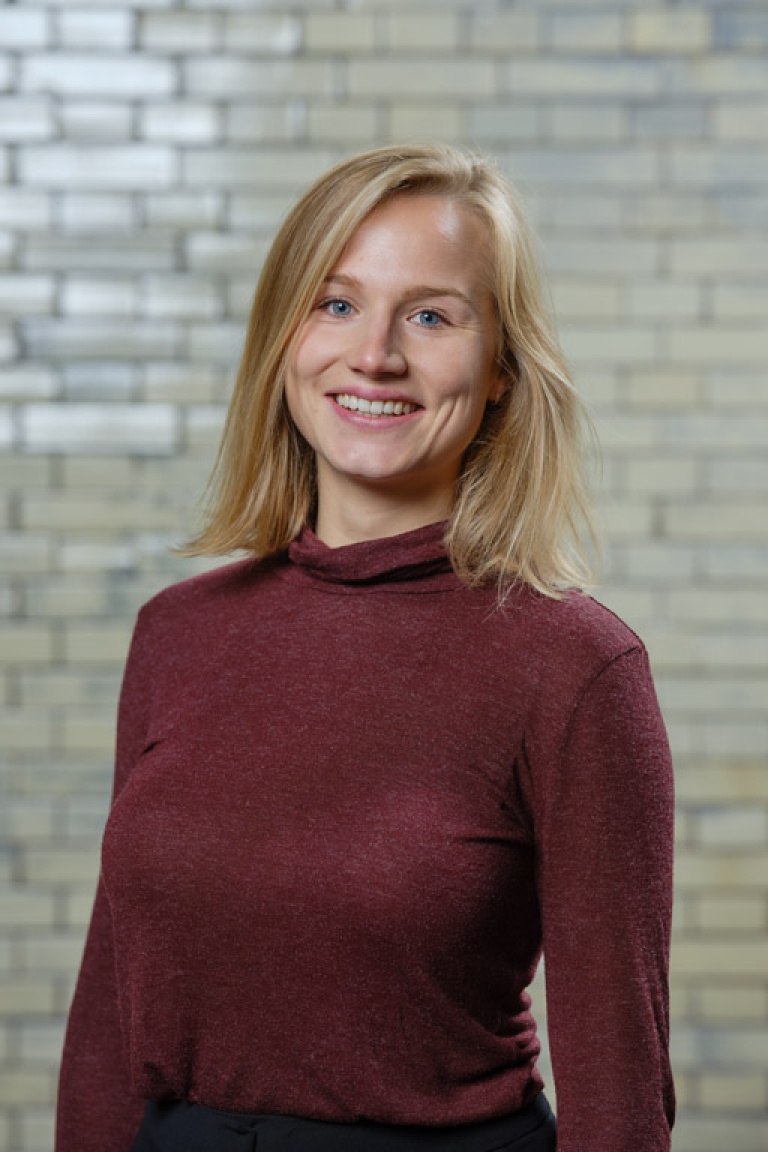Like emotions, emotional memories, and their existence can only be indirectly inferred from the way they are expressed. So how do you research an almost unobservable phenomenon, and then integrate it in a network theory of psychological problems? Inga Marie Freund is working on this as a PhD candidate since 1.5 years.
In ten years, looking back on her PhD, it might be an emotional memory for Inga Marie Freund herself: the moment that the server broke down of the smartphone app that was being used for the data collection of her first large experimental study. “Very disappointing after all the hard work”, she says. It was in the last weeks of 2021 and it meant that she did not have all the data she and her supporting team of students and research assistants had collected from 91 participants. “And with that, not enough observations to build a reliable network. I try to learn as much as possible from the data that I do have, to try to get an idea whether the stressful experience we put them through actually has an impact on a network of symptoms.”
Inducing stress
The task they gave all participants is indeed quite stressful, even if you read about it. The Trier Social Stress Test was developed almost thirty years ago and is a reliable way to induce stress to participants in the lab. Freund: “It would be difficult to compare the death of a mother to breaking your bike. In order to measure an emotional memory, you have to create such a memory in a controlled way, that is similar for everyone. In this experiment, we combined an experimental manipulation to induce an emotional memory with daily surveys for a longer period of time (EMA) before and after the lab experience and also after we reactivate the memory a week later. We hope to see how emotional wellbeing changes after the exposure to a stressful event and how we can put that into a network.”

In this 3 minute video by UVA, Inga Marie explains her project.
1022 minus 13
In the Trier Social Stress Test, participants are asked to prepare a five-minute speech about their dream job. You have to convince a panel of two why you would be the perfect match, but first you’ll have to conduct a surprise task. The panel is trained to give no feedback whatsoever, not even ‘hello’ when you enter the room, and your speech is video recorded. But first the surprise task, which is an arithmetic one: you have to subtract 13 from 1022 out loudly and continue subtracting for 5 minutes. If you make a mistake, the panel immediately corrects you: “That’s incorrect, please start again from 1022.” After these 5 minutes, you give your speech and if you fall silent, the panel has to wait 20 seconds before they say: “You still have time, please continue”. Freund: “It’s an evaluation process where you get no feedback. The uncontrollability and unpredictability makes it quite stressful.”
Multisensory experience
A week after this first lab visit, participants return to the lab, to do a computer task. You are shown a photo of one of the panel members, hear their voice saying “That was incorrect, please start again from 1022”, and because the microphone you wore during your speech was infused with an unknown smell, you’re confronted with that same smell again too. “This all together makes it a multisensory experience, to reactivate the memory of the stress task.” The ultimate goal she hopes to reach in her four years of research, is to define what emotional memory exactly is, how it fits in the network theory of psychopathology and what the influence is on mood. “I see it as a foundation for the next PhD’s, who can take it a step closer to the clinic.”
History
Next to this experimental work, Freund spent quite some time on writing a scientific opinion paper about the role of emotional memory throughout the history of clinical science and psychopathology. How it started with Freud and psycho analysis, then disappeared in behaviourism, but returned in the cognitive revolution. “Emotional memory seems to be a concept that keeps coming back, so maybe there is some importance to it”, Freund concludes with a sense of understatement. An overarching aim of hers is to gain a deeper understanding of the role of emotional memory in the development and maintenance of mental disorders. However, as emotional memory appears to be a latent variable, being unobservable and intangible, it is quite a challenge to access and study it.
Diversity
Despite the setback of the server outage, Freund still likes doing research a lot. “It’s far from easy, but it offers the learning experience that I wanted. How to deal with failure and how to move on, for example. Thankfully, I have a very nice research team and supportive supervisors.” Up next is a qualitative study, performing interviews with experts in the field of emotional memory, to get a bigger idea of what emotional memory is. “The diversity within my PhD makes it so attractive to me”, says Freund, who also works as an online psychologist for OpenUp one day a week. The company offers preventive mental health care for people without a formal diagnosis, through solution-focussed, 25-minute sessions. “This also gives me insights into what emotional memory is, and how it plays a role in mental health. It’s a nice combination, but my focus is definitely on my PhD.”
